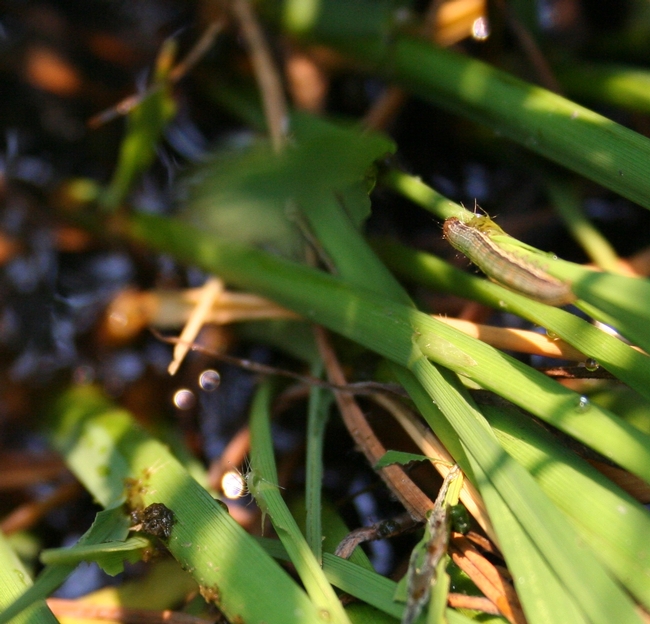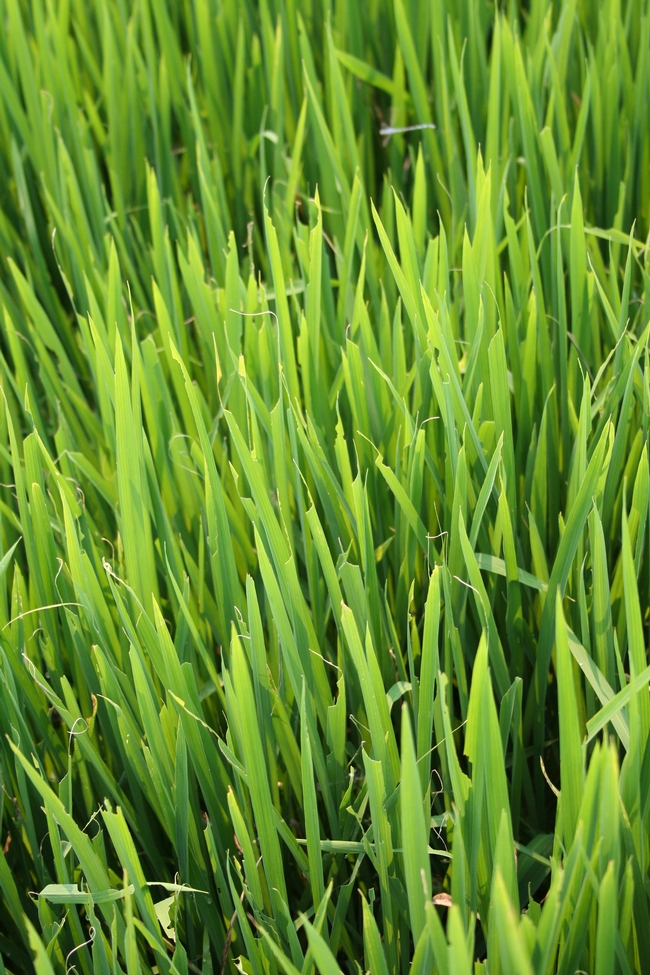Armyworms are common in rice fields from mid-July to August. Two species can infest rice, the armyworm and the western yellowstriped armyworm. These insects build up their populations in alfalfa, other grains and grasses, and invade rice late in the season. The adults are moths that lay their eggs either on rice leaves or on broadleaf weeds within rice fields. After the eggs hatch, the small larvae begin feeding on rice foliage and/or panicles. Young larvae are hard to see, they can be less than a quarter of an inch long and their color mimics older rice foliage. Larvae go through a series of molts, growing to 1.5 to 2 inches. When they are ready to pupate, they drop to the ground in search for a good pupation site in the soil. In rice, they usually drown. I have seen armyworms pupate in the leaf sheath of older leafs at the base of plants at the water level, but this is uncommon.
Foliage feeding does not affect yield unless the armyworms consume 25% or more of the crop's foliage. It's not uncommon to walk a rice field and find areas where feeding is noticeable. In those areas, open the canopy and look near the water level. You might find armyworms resting there during the day. At night or when it's cooler, they will climb up the plant and continue their feeding. Take notice of the size of armyworms you see – if most of them are small, they will continue their feeding and a treatment might be needed. If you can't find any armyworms, they probably have already completed their cycle and there is no need to do a treatment.
Armyworm damage can be more problematic during heading. Typical panicle injury consists of blank panicle branches, although sometimes the whole panicle can be blank. What happens is that the armyworm bites the rachis of the branch and the grains in that branch don't fill. Sometimes, armyworm injury can be confused with cold temperature blanking. However, if you look closely at the blank panicle or branches, you will see a chewing mark where the blank area begins. Inspect your fields as the panicles come out of the boot – I believe this is when most of the armyworm damage occurs. If after inspecting your field you find that 10% or more panicles are affected, and you can still find armyworms, a treatment might be needed.
For the most part, armyworms are not a major problem in California rice. Some growers experienced severe infestations last year; heavy infestations seem to be cyclical and return every few years. Luckily, armyworms have several natural enemies in rice fields that are very good at keeping their populations down. Birds are important armyworm predators and can function as a warning system for their presence in the field.


